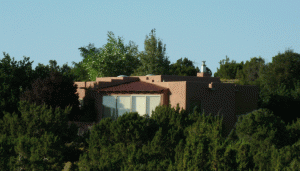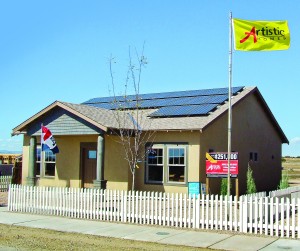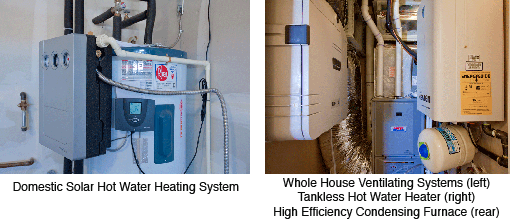What Green Really Means
The term Green is an often misused terms in real estate. Green implies sustainability but is more particularly described as follows.
A Green Home is a durable, comfortable and healthy home that uses less energy and water and produces less waste in its construction and operation. A Green Home will realize substantial savings in energy costs.
A Green Community is a settlement where residents have pedestrian access to places to live, work, shop, go to school and have fun and connectivity to the greater community by public transportation reducing automobile use. The community should support energy efficiency, energy generation and reclaim and reuse all waste water making local agriculture practical.
Natural Homes President, Alan Hoffman started experimenting with Green Home building techniques in 1977. Here is what he discovered and why Natural Homes can help you navigate through the myths and facts about energy saving, non-toxic Green buildings, home purchases and savings!
Green Homes
Low Tech

Green Homes come in two flavors, Low Tech and High Tech. The original, Low Tech homes face south to let winter sun in while shading out summer sun. This is commonly known as “passive solar” design and dates back to the Anasazi Indians that faced their Pueblos south. We learned that a well insulated house with the majority of the windows facing south and equipped with massive materials like concrete or adobe in the house can store the winter sun, releasing it at night to provide most of the homes heating needs and if properly designed also help cool the house in the summer.
Over the years Alan Hoffman has helped refine passive solar designs and identified their problems. The first Passive Solar home Alan built in 1977 had around 33% of it’s floor space (600 sq ft) in south facing glass (200 sq ft) and had only a few opening windows. He learned from this prototype that far less south glass is required and far more ventilation is needed to prevent the house from becoming a “toxic oven” in the summer. He found that 6% to 12% of floor space in energy efficient south facing glass is sufficient for solar heating if the home’s envelope is “super insulated” with walls insulated to at least R21 and the ceiling insulated to R50. That is to say that a 2,000 sq ft home needs only around 200 sq ft of south facing glass if all other elements were built properly. Those other elements include super insulation, properly designed window overhangs, proper ventilation for healthy air quality with thermosyphen cooling for the summer and the minimum number of windows on the east, west and north sides of the house. A properly designed Passive Solar home is the longest operating Low Tech Green home. They have few if any moving parts and require very little energy to operate for winter heating or summer cooling while requiring minimal ongoing repairs and maintenance.
The one limitation to low-tech designs is that they are not capable of reaching Zero Energy operations without adding High Tech elements like photovoltaic and solar hot water panels. By adding photovoltaic panels that generate electricity directly from the sun, the energy is provided to offset the energy used by appliances, lighting and when there is not sufficient sun to heat the house. With this addition, a Passive Solar home can reach Net Zero Energy consumption on an annual basis.
High Tech
Recently a number of companies have engineered and built high tech LEED certified homes. LEED stands for Leadership in Energy and Environmental Design and provides more than just energy efficiency. In an effort to quantify the efficiency of new homes the Residential Energy Services Network created the HERS system (Home Energy Rating System). A HERS rating is described as the increase in efficiency over a “code built” home, which is rated at 100. Homes built in the 70’s when the codes were weaker could easily be rated 150 meaning 50% more energy needed to heat the home than the house built to the 2010 building code. There are several levels of LEED certification from Silver with a HERS rating of around 55 all the way up to Platinum with a HERS rating of zero. That’s right, a 100 percent savings on energy costs. LEED certification also requires healthy air quality, reduced waste in construction, water conservation, sustainable site location and of course energy efficiency.

As America goes through the biggest technological change since the advent of electricity much research and innovation is taking place in the area of decentralized energy generation and enhancements in efficiency in appliance and lighting efficiency and home heating. These innovations are making it simple and cost effective to buy, build or remodel an Energy Efficient Green Home right now.
